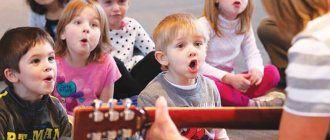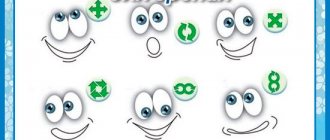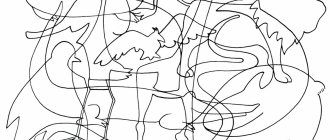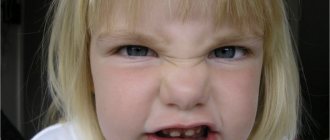One of the questions that concerns many parents is what exercises will help develop attention in children. You can notice that kids are rarely focused and concentrated, sometimes it’s not easy for them to do one thing, and yet attention is necessary not only for success in school or play, but also for their own safety.
What is attention?
Attention is a certain psychological process, a person’s ability to concentrate on a necessary action. A child’s success at school largely depends on how well it is developed, so it is very important to start working in preschool age, to create conditions for involuntary attention to develop into a voluntary, volitional ability to concentrate. And the best thing parents can do is to develop the ability to concentrate through play.
The following characteristics of this process can be distinguished.
- Volume. That is, the amount of information that a child can retain in his mind.
- Concentration. A child’s ability to concentrate on something specific.
- Sustainability. The time period during which it is possible to maintain concentration.
- Distribution. The ability to divide attention into several simultaneously occurring processes.
- Switchability. The ability to quickly transfer concentration from one action to another.
The task of parents is to work with their children so productively that they form and develop all these characteristics.
Attention is one of the processes of the cognitive, that is, cognitive, sphere of a person - along with memory, thinking, perception and imagination. Without concentration, it is impossible to obtain new information in the required volume and remember it, so this process can be confidently called the first stage of cognition. Then, with the help of memory, a person accumulates acquired information. Only with the necessary level of attention will a child be able to learn cognitive processes such as reading, writing, and learning in the future.
Why does a child have reduced attention?
Often children find it difficult to concentrate due to external factors that have a negative impact on their overall development. To avoid such a situation, you need to comply with certain conditions and control almost all aspects of the child’s life. So what should you pay attention to first?
Health
Good health is the main condition for a child to develop fully and comprehensively.
Diseases or illnesses can weaken concentration at any age, but this affects children much more: the baby becomes distracted and apathetic. It is extremely important to find and eliminate the causes of ailments, as well as closely monitor existing pathologies.
Teach your child to lead a healthy lifestyle. Try to limit your time watching TV, playing on the computer and on your smartphone. It is undesirable to overload him with information and affairs. Rest is one of the main components of good health.
Sleeping mode
If a child does not sleep well and does not follow a routine, he becomes chronically absent-minded, which leads to a decrease in school performance, stress and the development of various neuroses. The amount of energy for concentration and memorizing the necessary information also depends on the mode.
Physical activity
If a person’s body is not in good shape, then the brain does not function fully. The level of attention directly depends on the amount of mobility in the child’s lifestyle.
When children are outdoors, running, jumping and playing games, they get out their energy and stimulate active brain function. With enough active recreation or sports in a child’s life, he will be able to perceive and process information faster and better, which will have a positive impact on academic results.
Home furnishings
We are talking about the relationship of parents both with each other and with the child. When there are any problems in the family, discomfort is created and tension increases. Children react to such situations painfully and are the first to be hit emotionally.
As a result, school performance may decline, attention may wander, and the child will not be able to concentrate on the subject and will withdraw into himself. Always maintain a healthy climate in the family, and nothing will distract your child on the way to academic achievements.
Kinds
There are several types of attention that have their own specificity in preschool children.
First of all, passive (involuntary, or unintentional) attention, that is, concentration on something interesting, unusual without the child’s volitional efforts. In preschool age, this type is the main one: first, children pay attention to something noticeable, then they begin to be interested in what they did not know before, new to themselves.
The next stage of development is the formation of voluntary attention, and it is important to understand that it will not arise on its own from involuntary attention; for this it is necessary to train the child. The active variety is directly related to volitional efforts, so if a child is sick or irritated, his ability to concentrate decreases. Voluntary attention begins to form at the age of 4-5, although the first type still remains dominant throughout preschool childhood.
Attention of preschool children, its features.
We will help you write any paper on a similar topic.
- Essay
From 250 rub.
- Test
From 250 rub.
- Course work
From 700 rub.
Receive completed work or specialist advice on your educational project
Find out the cost
Attention -
one of the main psychological processes, the characteristics of which determine the assessment of a child’s cognitive readiness for learning at school and the success of his educational activities.
Good attentiveness of a child is the key to his early development, further good studies, success at work, and simply the opportunity not to stumble on the road in everyday life. Inattention can lead to both small troubles, such as confusing salt with sugar, and larger ones, for example, completing a task that is not written under the number assigned by the teacher.
Attention in itself is not a cognitive process, but characterizes the conditions for the occurrence of any cognitive process. Attention performs the following functions
: activates necessary and inhibits currently unnecessary psychological and physiological processes, promotes targeted, organized selection of incoming information, ensures long-term concentration of activity on the same object.
External attention
addressed to objects and phenomena of the surrounding world, to the actions of other people. Such attention can be observed in a child from birth: turning the head towards the sound, focusing the gaze on the mother’s face.
In preschool children, attention is directed to their inner world
. When your child suddenly stops and looks at one point, know that at that moment his inner attention reaches its highest point. We take this moment for absent-mindedness.
There are three main types of attention
: involuntary, voluntary, post-voluntary.
Involuntary attention
arises by itself, without the child’s efforts to create and maintain it. Bright, noisy things arouse interest, but it is short-lived and as soon as the object ceases to be interesting, this type of attention stops.
Voluntary attention
it is necessary for the child to do not what he wants, but what is needed, perhaps sacrificing another activity that is more interesting for him. Psychologists believe that the better the speech is developed in a preschool child, the earlier voluntary attention is formed. Its development is facilitated by various activities with the child, games according to the rules, in which the adult takes direct part, showing the need for such attention.
If a child is carried away by a game or completing a task, he no longer needs to make an effort to concentrate, and voluntary attention turns into post-voluntary
.
Here the signs of involuntary and voluntary types of attention are combined.
Preschooler's attention
has the following
properties:
volume, stability, concentration, selectivity, distribution, switchability.
Attention span
characterized by the number of objects that a child can follow without losing attention.
By the age of six,
a child is able
to simultaneously perceive not one object
(as at four or five years old),
but three
, and with sufficient completeness and detail. The scope of attention narrows if the child sees objects for the first time. At the same time, the bright appearance or size of objects at the age of 6 years become less important than at 3-4 years.
Sustainability
shows how long a child can
focus on an object or activity.
It is believed that
by the age of 5-6 years,
children can
maintain attention for up to 2 hours
, depending on the type of activity - a game or a monotonous, boring activity.
Concentration of attention
shows
how intensely a child can focus on an object and whether he is able to resist distractions.
Most often,
concentration in preschoolers is low
, and it is very important to develop it.
Selectivity of attention
allows the child
to focus on a specific part of the object
, which helps him successfully solve the problem.
Distribution
means the ability to pay
equal attention to several objects
, to perform
several different actions without errors.
Switching attention
promotes
rapid switching from one type of activity to a completely different one
, while the child experiences a certain nervous tension, which becomes less pronounced with age.
Usually in preschool age distribution and switchability
attention spans
are not sufficiently developed
, so they should be given special attention in activities with the child. In this case, you should take into account the personal characteristics of your child and not demand the impossible from him.
In preschool age,
attention is involuntary
and is caused by externally attractive objects, events and people.
The attention of a preschool child reflects his interest in surrounding objects and the actions performed with them. A child fixes attention on something or someone only during the period of time in which he retains direct interest in the person, object or event. That is
the child is focused until interest wanes .
The appearance of a new object
immediately causes
a shift of attention
to it. Therefore, children rarely do the same thing for a long time.
By the age of five, children can consciously concentrate their attention with the help of an adult. On one's own
The child begins
to concentrate and maintain attention
on an object of interest to him
by the age of six.
At preschool age, different degrees of attention stability are already observed in different children.
. This may be due to the type of nervous activity, physical condition and living conditions. It has been observed that nervous and sick children are more likely to be distracted than calm and healthy children.
During preschool age, due to the complication of children’s activities and their movement in general mental development, attention acquires greater concentration and stability
.
After three years, attention becomes more stable, and by six years it reaches a good level, which is very important in preparing a child for school.
So, if younger preschoolers can play the same game for 30-40 minutes, then by the age of five or six years the duration of the game increases to two hours. This is explained by the fact that the play of six-year-olds reflects more complex actions and relationships between people, and interest in it is maintained by the constant introduction of new situations.
The stability of children's attention also increases when looking at pictures, listening to stories and fairy tales. Thus, the duration of looking at a picture approximately doubles by the end of preschool age. Younger preschoolers look at pictures that interest them and can engage in a certain type of activity for 6–8 seconds, and older preschoolers can do it for 12–20 seconds. A six-year-old child is more aware of a picture than a younger preschooler
Major change in attention
in preschool age is that
children for the first time begin to control their attention,
consciously direct it to certain objects, phenomena, and stay on them, using certain means for this.
Voluntary attention
arises
as a result of the influence of adults, the result of upbringing and training
. It is distinguished by its active nature, complex structure, and indirectness.
The origins of voluntary attention lie outside the child’s personality. This means that the development of involuntary attention itself does not lead to the emergence of voluntary attention. Voluntary attention
is formed
due to the fact
that
adults include the child in new types of activities
and, using
certain means,
direct and organize his attention.
At the initial stage of the transition of attention from involuntary to voluntary, the means that control the child’s attention
(for example, a set of colored cards that are external aids for successfully focusing attention on the conditions of the game),
and reasoning out loud
.
In addition to the means that organize attention in connection with a specific particular task, there is a universal means of organizing attention
—
speech
.
Initially, adults organize attention
child using
verbal instructions
.
He is reminded of the need to perform a given action, taking into account this or other circumstances (When you fold the turret, choose the largest ring. Yes, that’s right. And where is the largest now? Remember!!! etc.). Later, the child himself begins to verbally designate those objects and phenomena
that need to be paid attention to in order to achieve the desired result.
Formation of voluntary attention
accompanied by the appearance of
egocentric speech
Egocentric speech - (from the Latin ego - I, centrum - center of the circle) - speech addressed to oneself, regulating and controlling the child’s practical activities.
Throughout preschool age, the use of speech to organize one’s own attention increases sharply
. This is manifested in particular in the fact that when performing tasks according to the instructions of an adult, children of older preschool age pronounce the instructions ten to twelve times more often than younger preschoolers.
Thus, voluntary attention is formed in preschool age with a general increase in the role of speech in regulating the child’s behavior.
The most effective activities for developing attention in preschool children are games
.
Playful activities promote intensive development and stability of attention
.
The process of forming voluntary attention
helps
to attract the baby to new activities
. It is important that the child expands the possibilities of his attention without experiencing much nervous tension, then curiosity, thirst for knowledge and liveliness of thinking will greatly help the child in his future school life.
Attention!
If you need help writing a paper, we recommend turning to professionals. More than 70,000 authors are ready to help you right now. Free adjustments and improvements. Find out the cost of your work.
Cost calculationGuaranteesReviews
Concentration standards
Concentration of attention refers to the period of time during which a person is able to maintain concentration on one action. In children, it can have a different duration depending on age, but even the number of years lived is not a fundamental factor. The norm depends on the individual characteristics of the baby. The table shows specific indicators.
| Age, years | Norm, minutes |
| 2 | 4-10 |
| 3 | 5-15 |
| 4 | 8-20 |
| 5 | 10-25 |
| 6 | 11-30 |
| 7 | 15-35 |
Indicators can be either increased or decreased, because attention, like the body and brain, can be trained with special exercises. Regular classes with a preschooler will give parents and the child a good mood, and will also be very useful for improving the ability to concentrate on something and maintain this concentration. It is necessary to develop it so that the child becomes more observant and can easily detect any small details or subtle signs. All this will further help in the learning process, since attention is closely related to memorization.
Formation of attention
Psychologists distinguish 6 stages of attention development in children.
- Disseminated (from 0 to 1 year). Children can be distracted by any noise or new toy.
- Fixed (1-2 years). The kid, busy with his business, is so absorbed in it that he does not notice anything around him.
- Flexible single-channel (2-3 years). He may stop what he is doing when he hears an address to himself, but will return to it very quickly.
- Established single-channel (3-4 years). Children can switch from one process to another, interrupt their activities, and then return to them again.
- Two-channel short-term (4-5 years). The child gains the ability to do two things at the same time - for example, play and listen to what his mother tells him. If it is necessary to perform a complex action, he is able to concentrate on it.
- Emerging two-channel (5-6 years). Can do two things at the same time, which is why attention training should begin at this age.
Knowing these stages will help parents understand their child better.
Techniques for increasing attention
We have seen that developing the ability to concentrate is of particular importance for preschoolers. And parents should train their children using an unobtrusive game form. Let's highlight a few tricks and techniques that you can use.
- Maintaining interest. Using game forms, you can ensure that the child will study with great pleasure and, accordingly, attentively.
- Stick to the duration of your classes. So, when studying numbers with a 4-year-old child, you need to understand that the child is able to hold attention for no more than 20 minutes, so it is better to keep the educational material within this framework.
- Favorite characters and toys will also help you not lose interest, and therefore listen and perceive what the parent is saying.
- Show by example. You can explain to the child that if he is attentive and tries to fulfill his parents’ instructions, then the result (for example, a tower of blocks) will turn out much better than if he worked without concentration, somehow.
- Reading and attention are interconnected, so to improve the second, you can teach your child the first. While the baby is just getting acquainted with letters, the mother can read interesting fairy tales and stories to him. Afterwards, you definitely need to discuss what you read, asking to retell it, asking questions. This will help you find out how carefully the baby listened.
If the baby has trouble concentrating and is very far from his age norm, then he may have shallow breathing. Inflating balloons, soap bubbles, playing the pipe or whistle will help correct the situation. In addition, studies have proven that walks in the fresh air and active sports games are very beneficial for children.
What are the types of attention?
There are three types of attention: involuntary, voluntary and post-voluntary.
- Involuntary attention arises naturally from the first year of a baby’s life; the child effortlessly concentrates on everything unusual and interesting.
- Voluntary attention is formed closer to school, around the age of 7, and continues to develop every year. The student needs to make an effort to focus on what he has to do, and not on what he wants.
- Post-voluntary attention is similar to voluntary attention, but its peculiarity is that the child performs all tasks with pleasure.>
For example, first-graders have well-developed involuntary attention: they are easily attracted by something unexpected, interesting and bright. At the same time, children do not have to make any effort to concentrate on this. But it is much more difficult for them to concentrate on uninteresting and monotonous work.
Types of exercises for development
The following types of attention tasks can be distinguished for 5–6 year olds.
- Repetition. The parent draws a series of 2-3 repeating figures on paper, the child’s task is to determine which one should go next and complete the series. Instead of figures, you can build rows of letters.
- Search for the superfluous. At first, the task is simple: for example, the baby is offered 10 triangles and 1 square or 5 animals and one plant. We are gradually making it more complicated: 5 garden flowers and 1 wildflower are presented.
- Find the difference. The game is well known to everyone. Two almost identical pictures are laid out in front of the child, his task is to find those details that are slightly different. The level of difficulty also varies depending on preparedness.
- A variation of the previous task - find two identical ones. The child is offered an illustration that depicts several objects, such as vases, that differ from each other in minor details. The preschooler must carefully examine the models and find two identical ones among them. In the first stages of work, it is better to use pictures with obvious differences; this will help the child gain self-confidence and reinforce his interest. Further tasks become more difficult.
- Working with pictures. There are special illustrations in which animals, such as tigers or wolves, are presented in a veiled form. You can invite your child to find them all.
- Correlation of an object and its shadow.
- Coloring by numbers. The parent gives the child a black and white picture that needs to be made in color, while the picture itself is divided into fragments, each of which is marked with its own number. A decoding of the numbers is provided separately (for example, 6 is pink, 5 is red). The child’s task is to carefully color the image without confusing the tones.
- Drawing by numbers. A very good exercise for preschoolers who are familiar with counting to one hundred, and children of primary school age. The child is offered a picture, which for now consists only of dots, next to which a number is indicated. The kid must connect them, moving in order: first find 1, then connect it with 2, and so on.
It is important to remember that training should be built according to the principle “from simple to complex.” If the child does not succeed in something, you should postpone this task and offer him a simpler option.
Speech as the main means of developing voluntary attention
The word acts as a means of organizing attention. The preschooler listens to the adult’s request or instruction and takes appropriate actions. In this case, it is the voluntary function of attention that is fully involved. First of all, the child has to listen to what he is told, and then redirect his attention directly to actions and objects (“bring the blue cup”, “first place the large cubes, and then the smaller ones on top of them”, etc.).
Speech is the most effective means of directing the attention of a preschooler. In early preschool age, the words spoken by an adult essentially serve as instructions to the child where to look, what to listen to, how to turn, etc. And at first they have the simplest forms: “watch what I do,” “take the green ones.” circles”, “feel how prickly the Christmas tree’s needles are.”
But every year a preschooler can capture more and more attention. Therefore, multi-step instructions and orders are feasible for him to assimilate. For example, a teacher teaches a child how to paint with watercolors: “Each time, dip the brush in water and then in paint - this way the paint will adhere better to the sheet. And be sure to wash your brush before using paint of a different color.” This is an algorithm that should be used constantly when drawing. And the child copes with this.
The more fully a preschooler himself masters speech, the more his opportunities for volitional choice of objects to which he will pay attention in turn expand. Many children willingly talk about how they will do one thing first, then watch another, etc. This means that they independently use the word to control attention.
Adults should encourage the child to tell him what he is doing, what he wants to draw or build. This simple method will allow the preschooler not to be distracted and to complete his small task.
The speech skills of older preschoolers allow them to purposefully pay close attention to individual objects and phenomena, as well as to the sphere of social relations. They ask questions of adults, perhaps out of fleeting interest in something. However, the answer they receive can spark further interest, and preschoolers focus their attention to learn even more.
Examples of simple games
There are a huge number of all kinds of games and tasks that will help your child learn to concentrate and also give him a good mood. The main thing is to conduct them in a positive way; the child should not have the thought that he is being taught something. It’s better if he is sure that mom and dad are playing with him.
Auditory attention
“Edible – Inedible” is a simple but effective game that you can play with one child or several. Mom throws the ball, saying the name of a dish, product or inedible item, such as clothing. The child listens carefully. If he hears the name of food, then he catches the ball, but if something unrelated to cooking sounds, then he needs to hit the ball.
There are many variations, so when a child is tired of food and is bored, you can offer slightly different games.
- "It flies - it doesn't fly." The mother names animals and birds, the child, when he hears the name of a bird, raises his hands, and when he hears the name of an animal, he crouches. Over time, the task becomes more complicated - the adult names the animal and raises his hands, while the child must pay attention and sit down.
- "Harvest". Mom is reading a story, into which she will periodically insert the words “plums” and “cherries,” and not always appropriately. The child must, firstly, hear the signal words themselves, and then perform the action: for “plums”, jump, for “cherries” - stand on one leg. An important feature is that the exercise is done from simple to complex: first, when pronouncing the text, the parent uses his voice to highlight signal words, then pronounces them in a normal rhythm so that the child is more attentive.
- "Catch - don't catch." You will need two small balls - light and dark. A light child should always catch, and a dark child should only catch when his mother silently throws him. If at the same time the command “Catch” is heard, then you cannot catch.
- "Repeat the rhythm." The mother sets a simple rhythm, beating it with her palms, and the baby must repeat it.
- "Clap." This is also an interesting task, the level of difficulty of which can vary depending on the child’s preparation. The mother gives the instruction: when she claps once, the child stands on his toes, when she claps twice, on his heels, when he claps three times, he squats. The speed of the clapping gradually increases.
All these games are good because they are not tied to a specific place, they can be played almost anywhere, and the child will not have the feeling that he is being taught something, he will have fun and interesting.
Series of tasks
The child is given instructions to complete several tasks (you need to start with three, gradually increasing their number), while all tasks are listed at once, so the child will have to remember both the actions themselves and their order. For example:
- Jump 7 times.
- Bring the red item.
- Name a garden flower.
If the child did everything correctly, you should definitely praise him, but if something didn’t work out, correct him, but in a soft, delicate manner. Gradually the number of tasks and their complexity increases; such an exercise will also help improve memory.
Other effective games
It is very important to constantly offer the preschooler something new, so that he gets the impression of a game, and not a useful activity. For example, "Dwarfs and Giants". The idea is simple: mom names an object, it must be either large (mountain, skyscraper, multi-story building, whale, elephant) or small (needle, button, coin, bead). The child listens, when a word from the “big” series is pronounced, that is, “giant,” he stands on his toes and raises his straight arms up, when the “small” one, he crouches.
If there are several children, you can play “Broken Phone”. To do this, all participants sit in a row, the first whispers a word in the ear of the second child, who passes it on to the third, and so on. The latter listens to the word and pronounces it out loud; if it matches the original version, then the phone works, but if not, it is broken.
“Guess where the woodpecker is.” An adult knocks, imitating the knock of a woodpecker, sometimes loudly (the bird is close), sometimes quietly (far away). The baby’s task is to tell where exactly the woodpecker is located.
Visual attention
There are a large number of exercises that will help improve visual concentration, and you can play in any convenient place - at home, on a walk, on the way to your grandmother. They are simple, do not require any preparation, and are effective.
- Search for an item. The mother describes some object that is in the room (outside), the child must find it with his eyes and name it.
- "Look at me". The child examines his mother, her outfit, hairstyle, and accessories for a few seconds. Then he turns his back to her and answers questions like “what color is my bag”, “am I wearing a lilac jacket”, “do I have a brooch”? The main thing is to formulate questions so that the child has a chance to answer them. You can make the work more complicated: the child looks at his mother, tries to remember the details of her costume, after which she changes something in her appearance, for example, takes off her scarf. The baby must remember the previous image and report what changes have happened to him. The game is played on the principle of increasing complexity: at first the change is obvious, then, when it becomes easier to achieve the required concentration of attention, the details are chosen to be less significant. For example, a mother can remove the ring from one finger and put it on the other, or make two changes to her image (of course, the child must be warned about this).
- Working with a picture. Very similar to the previous task. The child is given a picture that he has not seen before. He should try to remember as many details as possible. After this, the illustration is removed and the baby is asked a series of questions.
- Graphic task "Beetle". The parent draws a sheet of paper in advance to make cells. Places a beetle figurine in one of them. Then he gives the task - listening to his prompts, move the insect. For example: two cells to the right - then one down - now three to the left and one up. Then the task becomes more complicated: mom immediately names several moves: cell down - two to the left - three up. The child must follow the direction with his eyes and place the beetle in the last cell. You can't move your finger.
- Another good exercise is “Cross out the letter.” The mother gives the baby a text, as well as a task - to find all the letters in it, for example, L and cross them out. When this works out well, you can make it more complicated: find A and L, cross out L with one line, and cross out A with two.
- “Do it as it was.” The figures are laid out in front of the child in a certain sequence. These can be buttons of different colors and colors, toy dishes, cards with images. The child tries to remember the sequence, then turns away, and the mother swaps some two objects. Turning around, the baby must say where the changes occurred.
Games to develop attention should be carried out regularly, only in this case can a positive effect be expected from them. Among the many exercises, you can choose those that your baby likes most and turn to them.
How to develop attention skills in a child
In order to gradually and effectively develop the baby’s attention and memory, it is necessary to include various exercises in the process. The main thing is that they take place in a playful format and that the child is interested in taking part in it. You can play with him, so the baby will feel supported and will have a competitive attitude.
Schulte tables
This exercise is implemented in many applications - you can do it anywhere. The table is a 5x5 square with 25 cells, in which numbers from 1 to 25 are located in a chaotic order. The child’s task is to find all the numbers in order as quickly as possible.
The tables come in large 7x7 and 8x8 cells, and there are also colored distracting examples and variants when, after finding a number, all the other numbers in the table are shuffled, preventing you from remembering their locations.
Stroop test
The exercise consists of several lines. The child will see words denoting different colors, but they will be written in different ink. The goal is to name the actual color of the word, not the written color. For example, if the word “red” is written in blue, then you need to say blue.
It’s easier for our brain to read a word, and such a simple discrepancy confuses it for a few seconds. It is believed that this test was used in counterintelligence to screen suspects. They were given this piece of paper with words and asked to name the colors. If a person does not know the language in which the test is written, then listing the colors will not be difficult, but ignoring familiar words without preparation is difficult.
Camera
The point is to pay attention to a specific part of the body or clothing of the people you meet all day long. These could be noses, eyebrows, earrings, etc. You need to adjust your “lens” only to this part of the image, examine it (without causing inconvenience to strangers, of course) and try to remember. This way the child will learn to see small details and pay attention to nuances. Then you can look at the person and describe his appearance as a whole. A high concentration of attention will be required, because your gaze will need to focus on many details at once.
Exercises with objects
For some time, you need to pay attention and name objects according to a pre-selected attribute: specific color, shape, size, material of manufacture, area of application. Start small. You can train in a room or apartment, and when all the subjects have been learned, look for subjects on the street. Convenient to play while walking.
If you want to play with your child at home, then take several objects, place them on the table and ask the child to remember them. Then mix the items, remove a few or, conversely, add extra ones - now the child must return all the items to their place, recreating the original picture on the table.
You can complicate the task: let the child remember all the objects, and then turn away or leave the room. Remove one or more of them, and the child needs to figure out the loss.
Labyrinths
A simple but addicting game that requires concentration. The purpose of such an exercise is to find a way out of confusing corridors or to trace which symbols connect ornate lines. But there is a nuance: you cannot lead a pencil or finger along the line - you can only trace the path with your eyes.
Fly
You don't need any special equipment to play; you only need available tools and enthusiasm.
Draw a 5x5 field, write letters on top and numbers on the left, like in the game “Battleship.” An imaginary fly sits in the middle cage; its movement always begins from this place. Select a leader who will give the fly the direction of flight for 30 seconds using the commands: up, down, left and right (in cells).
Players need to track the movements of the fly and after 30 seconds give the correct answer on which cell it landed on. The game can be gradually made more difficult: let the fly fly out of the field or even keep the field in your mind without a piece of paper.
Find the differences
The child is faced with the task of finding all the differences between two seemingly identical images. Pictures can be found on the Internet, but choose images that are not too detailed so that the child can get used to the game. This exercise is suitable for both first-graders and students in grades 2–4.
But for schoolchildren in grades 5–7, bright pictures with an abundance of small details are just right, the consideration of which trains not only attentiveness, but also the ability to concentrate on several objects at the same time.
Snowball
You can play together with your child or involve other family members. The rules are simple: the first player names a word, the second player names this word and says his own, the third player repeats the first two words and says his own, and so on. As the game progresses, a long chain of words is formed, which each player must name every time it is his turn. This exercise also develops memory.
Reverse Day
The essence of the exercise is that the child needs to remember how his day went, but in reverse order. It is advisable to remember all the events of the past day, and if you manage to remember the details, you can safely say that your child’s attention and memory are at a high level.
You can guide your child, help him and give him hints if he cannot remember some events.
Realize your potential together
Add something from yourself to each exercise, transform it as you please, the main thing is that the child finds it interesting and is as passionate about the process as possible.
Diversify your activities, come up with interesting games and tasks, and join in the training. And if you don’t have time to draw up a lesson program, sign up for the “Family Memory Development Course” and realize your hidden potential together! Remember that the process of developing memory and attention in a child is quite labor-intensive. Everything has its time. Be patient and the result will meet your expectations.








